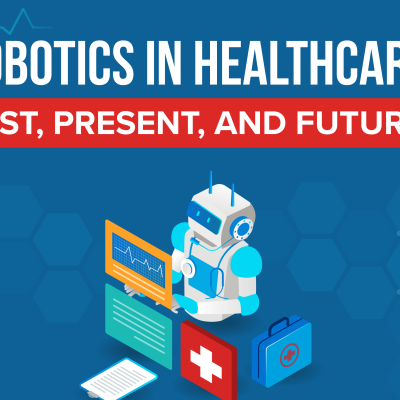- AdventHealth University
Decades ago, for a person to earn an advanced medical degree or certificate, they would need to readjust their career, relationships, and life responsibilities. A nursing student may only be able to work part time. Someone in a public health master’s program may have to sacrifice time spent with loved ones. An advanced health education is beneficial to students, as well as the future patients and communities they serve, but it wasn’t always convenient.
As technology has progressed and evolved, so has its applications in healthcare. Digital tools are not only helping patients — they’re enhancing health education itself.
Technology is making courses more engaging, offering students new opportunities to collaborate and conduct research, and even providing flexible, comprehensive methods to learn and earn a degree.
To learn more about the application and evolution of technology in health education, check out the infographic below created by AdventHealth University Online.

Technology Has Broadened the Scope and Services of Healthcare
Technology has enhanced healthcare services — from ensuring that better care is provided to hospital patients to helping communities that are hundreds of miles away from specialized clinics. It’s critical that today’s students understand the importance and application of modern technologies being deployed in healthcare settings.
Telehealth and Telemedicine
From their computers, tablets, and even smartphones, patients can perform vital health tasks, ordering prescription refills, making appointments, and consulting with specialized practitioners online. Doctors and practitioners can also use telemedicine devices to remotely monitor patients’ health status and vital signs. Studies show use of this tech has grown from 35% in 2010 to 76% in 2017.
Electronic Health Records
Instead of healthcare professionals needing to take valuable time to contact various healthcare offices where a patient was previously treated, electronic health records (EHRs) make it possible for them to quickly access a secure digital snapshot of a patient’s treatment history. Future EHR applications can include helping international travelers access their medical records, as well as increasingly incorporating imagery data, such as photos of a patient’s bedside.
Artificial Intelligence and Robotics
Artificial intelligence (AI) in the form of computer-aided detection can help determine what illness or condition a patient may have, while robotics helps surgeons and other practitioners deliver the most precise care possible. According to communications of the Association for Computing Machinery, robots can also help fill care gaps, assist practitioners, and identify unique solutions to a patient’s complex health problem.
Technology Has Made Healthcare Education More Efficient and Affordable
In the past, earning a bachelor’s or master’s in a health-related field would often require students to sacrifice their careers and sources of income to attend school in person. Now, online and digital education services have allowed today’s health students to receive an enriching education in a flexible format.
Convenience of Online Classes
A nursing student doesn’t have to quit their job to enroll in nursing school. An aspiring health administrator can participate in a rewarding online program while balancing a course load with other responsibilities. Online classes and programs give students the ability to advance their education in a way that works with their lives. It’s becoming increasingly popular, too: A report from Technavio states that the online higher education market is projected to grow around 20% by 2021.
Abundance of new Research
Medicine is constantly evolving, which sometimes leads to certain practices becoming outdated. Yet modern tech gives health students access to the most up-to-date research and information available. According to an article in Medical Reference Services Quarterly, libraries are now incorporating technology into research activities and serving as places where individuals can gain new tech skills.
Enhancement of Classroom Experience
Students now can foster more meaningful relationships with their professors and peers. Integrated digital tools, medical apps, and online communication platforms have given students a more immersive, hands-on educational experience. Tech like virtual reality have enhanced how medical students learn about human anatomy, and haptic gloves can help give pharmacy students the ability to feel the meds they’re dispensing.
Breakthroughs in Imaging Education
From ultrasounds that give expecting parents a first look at their unborn babies to devices that detect serious afflictions, such as cardiovascular disease, advancements in imaging technology are improving patient lives and health outcomes. Students in health programs that are focused on or incorporate imaging technology fully understand the importance of these devices and their impact on patient lives.
Deeper Education in Imaging Technology
While these groundbreaking technologies have helped detect certain afflictions and improve patient health, students can take advantage of technological advancements in various health specialties via immersive learning and experience.
Combination of Online and Real-World Learning
Online certificates and imaging technology degrees allow students and technologists to take advantage of the flexibility of digital coursework. Additionally, clinical experience provides these students with a hands-on education to ensure that they master the necessary field skills.
Preparation for Certifications
Depending on the specific area or field and aspiring health professional wants to enter, additional certifications may be needed. Digital tools like online practice exams and study guides can assist students in the preparation for certifications.
Conclusion
Technology isn’t only helping to improve the quality and efficiency of healthcare, but also providing new avenues and opportunities for engaged, immersive learning. As technology continues to grow and benefit patients and health professionals, so will its applications and uses in health education.


